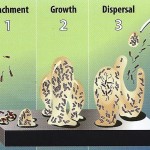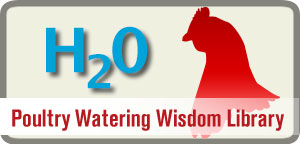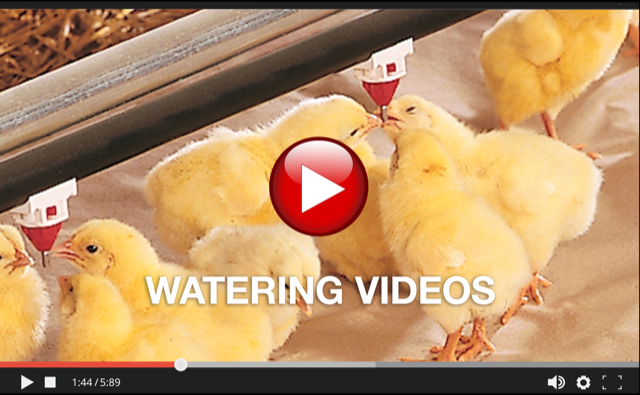Keeping your watering system biofilm-free begins with a regular schedule of high pressure flushing of the drinker lines (click to see “Biofilm: What it is, what it does“).
Most watering systems today come with a flushing mechanism that makes drinker line flushing easy to do. A regular schedule of flushing is the key to preventing biofilm from getting a foothold inside your watering system. Accordingly, Ziggity’s best management practices urge producers to high-pressure flush (1.5 – 3.0 Bars / 20 – 40 psi.) as follows:
• One minute for every 30 meters (100 feet) of drinker length.
• Daily if possible, but at least once a week, plus…
• Immediately after every intervention (pharmaceuticals, vitamins, etc.), before the intervention solidifies and makes it difficult to remove the residue from the interior walls of the drinker line.
Removing entrenched biofilm (biofilm built up over many production cycles) requires a more aggressive approach – one that strips away or removes the biofilm attached to the interior walls of water bearing pipe. We recommend performing the following protocols in such cases, but only between production cycles when birds are not present:
1. Use a hydrogen-peroxide based cleaner – there are many products on the market today that are specifically formulated for poultry applications.
2. Be sure to use protective wear, goggles, etc. and follow all safety instructions.
3. Open the end assembly so water drains form the drinker lines. When empty, close the end assembly.
4. Prepare the hydrogen peroxide treatment as instructed by the manufacturer for cleaning between production cycles.
5. Fill all drinker lines with the treatment.
6. Allow the treatment to remain in the lines as recommended by the manufacturer.
7. Walk the drinker lines with a broom and activate all the drinkers with the broom bristles. This allows the treatment to clean the drinkers as well.
8. Flush the lines to remove all the treatment water.
9. Walk the drinker lines again with the broom and activate the drinkers.
10. Flush the drinker lines again before the birds are placed.
A major benefit of hydrogen peroxide is that it is not only environmentally friendly, but it is far less corrosive to drinker components – which is not the case with chlorine and acid-based treatments. Before using hydrogen peroxide with live birds, please consult your veterinarian for suitability and adhere to local rules and regulations.
The potential threat that biofilm poses to the health and growth of your birds makes it imperative that producers take appropriate measures to remove and prevent it. To help make drinker line flushing a regular practice, some producers find it helpful to install an automatic flush system that will flush all the drinker lines on a programmed schedule (this will be covered in a future bulletin).
However it is done, regular drinker line flushing and regular cleaning with hydrogen peroxide should be high on a producer’s list of management tasks.
Next: Biofilm: Some understandings about how to eliminate it.













